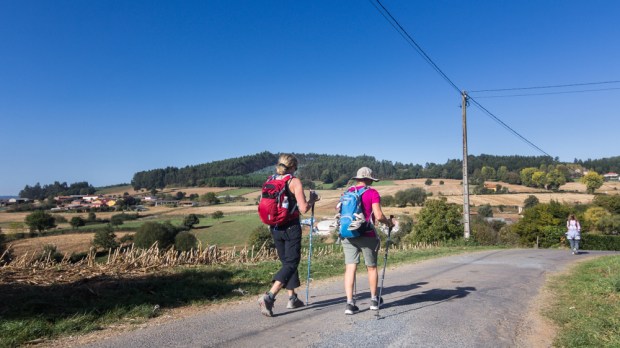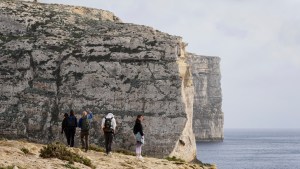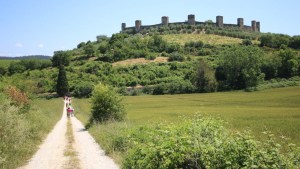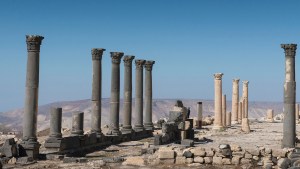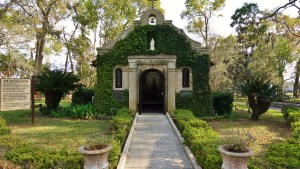Going on a summer pilgrimage has its advantages. For most people, summer is the only time of the year when one or two weeks can be used for anything else besides the same old usual routine. And whereas it is true that most holy routes and places can be crowded (and unbearably hot) during the summer, there are plenty of good reasons to visit them from June to August.
Pilgrimages in the Bible
Christian traditions have read the biblical book of Genesis as portraying human beings as exiles, in an often-inhospitable world, estranged both from God and from one another. Later biblical narratives (and Christian commentary) highlight this being exiled as a constitutive, unavoidable, fundamental attribute of human existence. Pilgrimages are, both metaphorically and spiritually, ways to undo said exile, as if walking back home.
Exile is constant throughout the Old Testament. Abraham and his descendants go from one exile to the other: Egypt, the desert, Babylon. But pilgrimage is also prominent in most of these narratives. These exile-pilgrimage dynamics makes it clear both experiences share common traits. The many different journeys from and into exile we find in Scriptureare themselves pilgrimages, packed with rich spiritual meaning.
All New Testament writers highlight the inevitable transience of this world (Cf Jn 2:17; 1 Cor 7:31; or James 1:11) thus encouraging believers to understand themselves as “pilgrims and strangers on the earth” or “temporary residents” whose true home is to be found in heaven (1 Peter 2:11; Hebrews 11:13). These texts have helped perceive Christian life as a journey towards that homeland — thus giving Christian pilgrimage a distinctive inward-and-outward dimension.
Christian pilgrimages were first made to sites associated with the birth, life, crucifixion and resurrection of Jesus —but also to those associated with the first saints and martyrs of the Church, and then extended to other areas of Christian life and history in general. Testimonies date back as early as to the 3rd century, and plenty of surviving descriptions of Christian pilgrimages to the Holy Land date from the 4th century, making it clear this practice was quite common.
Alright, but where here to go?
Whereas the famed Spanish Camino de Santiago is still the most popular of all pilgrimage routes in Christianity, Malta and Gozo have caminos of their own. This should not be surprising, since Maltese Christianity is as old as Pauline preaching. On his way to trial in Rome in the year 60, Paul was shipwrecked off the northwestern coast of Malta and spent the unnavigable winter months there. During his stay, he converted the island’s governor, Publius (Malta’s first bishop and first saint), healed the sick and won souls for Christ, establishing the very roots of Maltese Christianity. Check out the link below for more information:
The Via Francigena
Before the discovery of the tomb of St. James, Rome was the European city with the only Western-known burial spot of one of the 12 apostles: that of Simon Peter, in addition to the so-called “apostle to the Gentiles,” Paul of Tarsus.
Although it was not until the 6th century that the main Roman sanctuaries were renovated to facilitate pilgrims’ visits, the first pilgrimages to Rome date back to the 2nd century. Solid historical evidence shows that, for example, Origen traveled from Alexandria to Rome as a pilgrim, perhaps in a jubilee year.
For centuries, countless new converts to Christianity went to Rome from northern Europe. And while the Christian conquest of Jerusalem and the discovery of the tomb of St. James opened new pilgrimage routes for European, Middle Eastern, and North African Christians, the Via Francigena remained a consolidated pilgrimage route into the Eternal City. Check out the link below for more information:
The Jordan Trail
The Jordan Trail is an almost 700-kilometer-long hiking trail that crosses Jordan from north to south. It begins in Umm Qais, by the ruins of Gadara, the ancient Roman and Greek town overseeing the Sea of Galilee, where Jesus exorcised the Gadarene demoniac.
Pilgrims can choose whether to cover the eight different regions (a trip that would last at least 40 days, in a typically biblical way) or the region (or regions) of their preference: from Umm Qais to Ajloun, from Ajloun to Salt, from Salt to Wadi Zarqa Ma’in (including the Roman Road and the canyons of the Dead Sea), from Wadi Zarqa Ma’in to Karak (the Crusaders’ Castle), from Karak to Dana (an exceptionally green biosphere reserve), from Dana to the legendary Petra, from Petra to the impressive sands of the Wadi Rum desert, and from the desert, finally, to the Red Sea.
North America
For Catholic travelers in the United States and Canada, there’s plenty of time this summer to hit the road to take in any of North America’s many historic shrines and churches.
So fill up the car with gas (ouch!) and make arrangements for a neighbor to feed your cat and water your plants. It’s time for a family “pilgrimication.” Here are a few ideas for churches or shrines to visit this summer:
